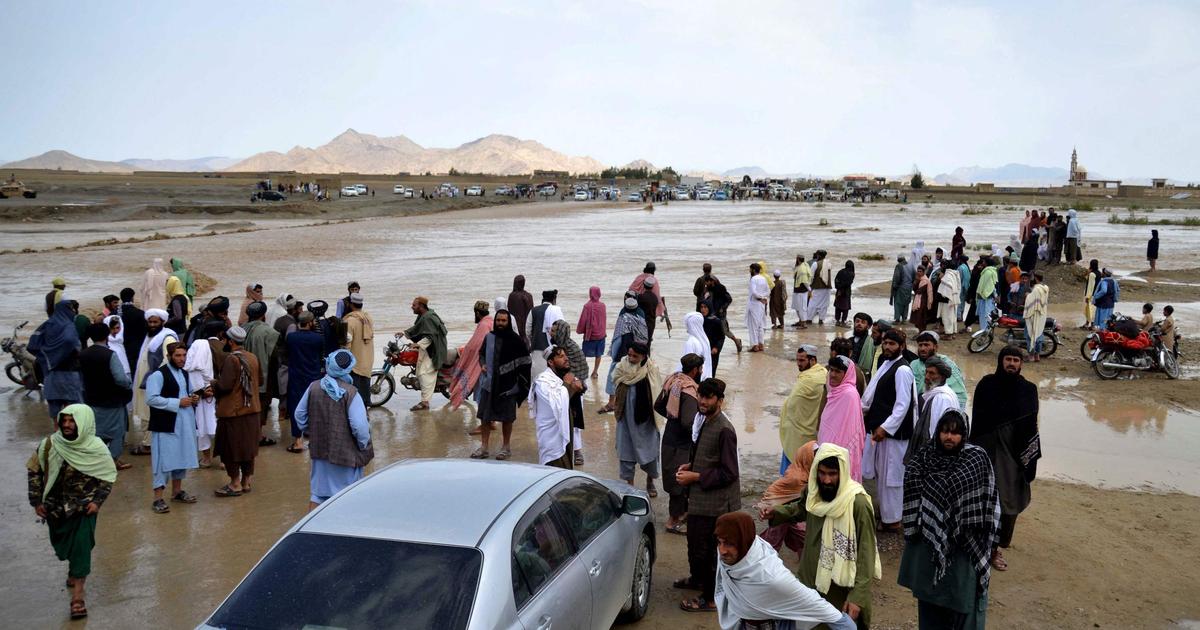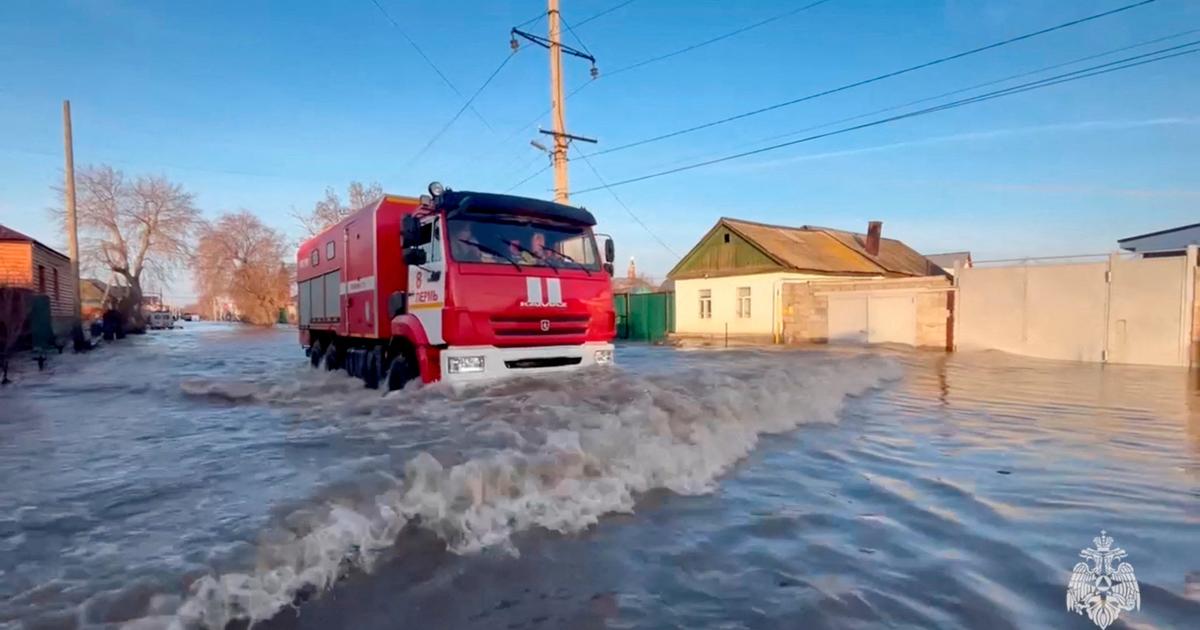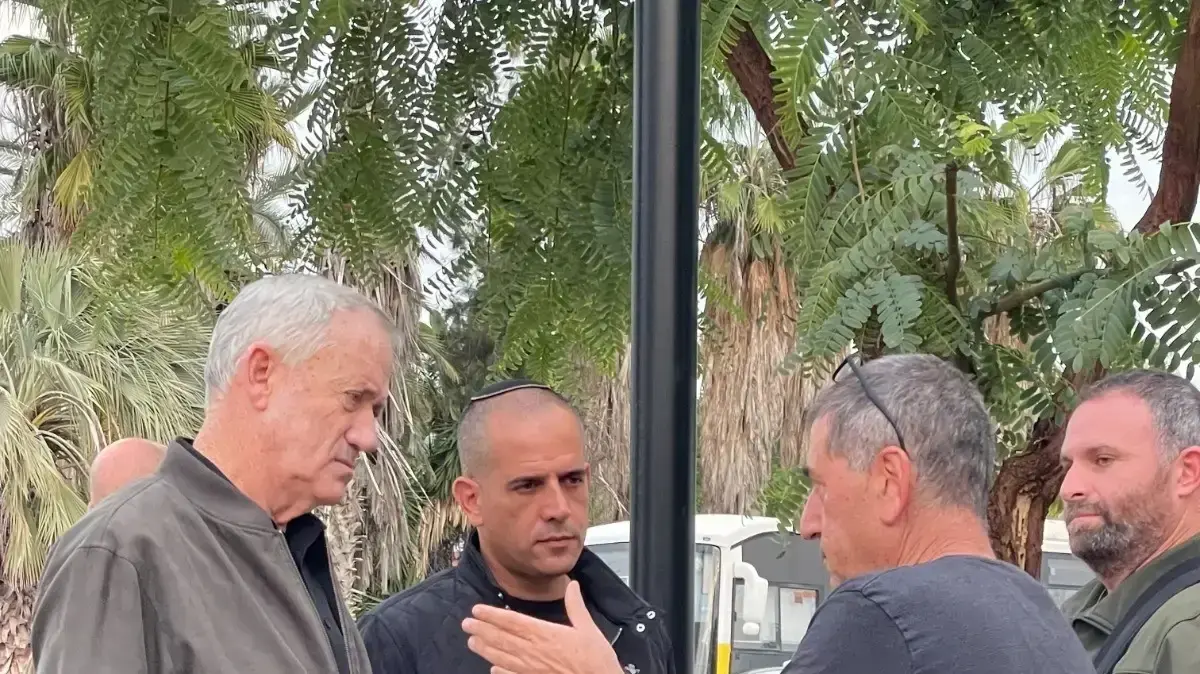KHERSON, Ukraine — Oleksiy Kolesnik waded the shore and shivered on dry land for the first time in hours, rescued Wednesday morning after spending the early morning sitting on top of a closet in his flooded living room.
"The water came in very fast," said Kolesnik, who was so weak he had to be helped out of a rubber dinghy by two lifeguards.
"It happened so fast."
Residents unloading their belongings from a boat in Kherson. Photo Mauricio Lima for The New York Times
Foul, brown waters, with plastic bags and pieces of straw swirling in the whirlpools, bathed the streets of Kherson, the regional capital of southern Ukraine, where rescuers had evacuated a neighborhood cut off by flooded streets.
Exhausted residents gushed out of rubber boats, carrying at most a purse or backpack, and sometimes a cat or dog.
The scene, overlooking a flooded square, was just a small snapshot of the vast devastation caused by Tuesday's destruction of the Kakhovka Dam, which overflowed a stretch of more than 80 kilometers of the Dnieper River to swallow docks, farms, gas stations, cars, factories and homes.
It would be a calamity in times of calm, but it hit a region ravaged and largely depopulated by war, where the river forms the front line and providing basic services and communication was already a struggle.
Dragging chemical pollution, detached landmines and various debris - a refrigerator here, a red armchair there - the Dnieper stuck its contaminated fingers into drinking water supplies, drowned crops and drove thousands of people from their ruined homes downstream.
Upstream, it drastically reduced the reservoir that many Ukrainian farmers need to irrigate their fields and that the Zaporizhzhianuclear power plant uses to cool its radioactive fuel.
"We were getting used to shelling, but I've never seen a situation like this," said Larisa Kharchenko, a retired nurse from Kherson who thought she could weather the flood on Tuesday, when water was knee-deep in her garden but not yet in her home.
On Wednesday, water entered through the door and in some areas reached the roofs of houses.
"It keeps coming," he said.
"Someone has to stop Putin," he added, referring to Russian President Vladimir Putin, who ordered the unprovoked invasion of Ukraine in February 2022.
Ukrainian authorities accuse Russian forces, who were in possession of the dam, of blowing it up to thwart a Ukrainian offensive, although so far little evidence has emerged about what happened.
On the Russian-controlled riverbank, residents of the town of Oleshky pleaded for help in an online chat group, searching for missing loved ones and asking for help as the waters rose.
Some wrote that they were gathering in the tallest buildings in their neighborhoods.
Local officials — both Ukrainians who fled last year and those settled by the Russian occupation — said nearly the entire city was flooded.
"The water is coming! Help! I beg you!" one person wrote.
"Three people on the roof, one of them elderly."
Another wrote that three adults and a 15-year-old boy were on a rooftop — and that the boy was panicking.
Another message said three children were trapped in a house.
"The second floor is already flooding," it said.
"Asking for help from whoever cares!"
Kateryna Kovtun wrote on the forum, searching for her grandparents in Oleshky, and learned late Tuesday that they had been rescued from a roof and taken to a nearby village.
. "I don't know what's next," he said.
Oleshky is one of 35 affected villages on the Russian bank of the river, according to Vladimir Saldo, a regional administrator appointed by the Kremlin.
The city of Kherson, the nerve center of the Ukrainian agricultural industry, is located on the western bank of the Dnieper, controlled by Ukraine.
Last year it fell into the hands of invading forces, most residents fled and it was occupied for months.
The Russians withdrew in November but have continued to bombard the city and surrounding region from across the river.
Many neighborhoods, perched on cliffs above the river, were left untouched by the flood, but low-lying areas were a landscape of water and floating debris.
Rescuers ventured out in boats to pull stranded and frightened people from rooftops or upper floors of houses, with the occasional boom of artillery in the background.
The entire neighborhood of Ostriv, one of the areas most vulnerable to Russian bombing, was evacuated.
Alla Snegor, 55, a biology teacher, got out of a boat and looked back at the flooded streets of the city.
"Think about what's in this flood," he said.
"Pesticides, chemicals, oil, dead animals and fish, and cemeteries have been taken."
Landmines planted by armies have been washed away by the current, some exploding and others falling with the current to new sites, the United Nations has warned.
Serhiy Litovsky, a 60-year-old electrician, said what worried him most was the long struggle that awaits southern Ukraine, one of the world's richest agricultural areas and dependent on irrigation, mainly from the rapidly depleting reservoir.
"Without water, no one will live here," he said.
"The legacy of this will last for tens of years."
The scale of the catastrophe is hard to imagine:
"Without the war, this would be a great catastrophe. But this came along with the war."
Some people displaced by the flood were transferred by train to Mykolaiv, a Black Sea port city less than 65 km northwest of Kherson. Mykolaiv was already under pressure for its role as a transit centre or temporary home for many fleeing the fighting.
The Mykolaiv region was home to some 190,000 internally displaced Ukrainians before the levee broke, according to the United Nations humanitarian affairs office.
"The flooding," the office said, "will likely worsen an already fragile humanitarian situation."
Thousands of children were among those fleeing, he added.
Southern Ukraine faces many challenges, such as finding long-term accommodation for thousands of people.
Towns and cities, such as Kryvyi Rih, an iron ore mining and steel smelting centre, have run out of drinking water, which was drawn from the reservoir.
The Zaporizhzhia Nuclear Power Plant was the main source of electricity in the south before the war; Now in Russian hands, it has been damaged by bombing and does not supply power to the grid.
For now it has enough cooling water, but its future remains very uncertain.
"It's a catastrophe for the whole south," said Roman Kostenko, chairman of the Ukrainian parliament's Defense and Intelligence Committee. But on Wednesday, the task was to save people, he said, adding:
"Later, we will deal with the legacy."
Kostenko, who is also a colonel in the Ukrainian army, was coordinating efforts Wednesday by soldiers who had flown drones to harass Russian forces with thrown hand grenades.
They were now bringing bottled water and food to people trapped on rooftops.
After spending the night and day on rooftops in flooded areas, several people said they had been visited by drones while waiting.
"I was sitting on the roof of my house when a drone passed by and dropped a bottle of sparkling water," said Henadiy Rotar, 59.
"Within 10 minutes another drone passed by and dropped a can of meat."
Once located by the drone, it didn't take long for a rescue ship to arrive.
"I thought I would spend another night on the roof," he said.
Kateryna Krupych, 40, her son Maksym, 12, and daughter Maria, 4, came ashore exhausted and barefoot.
They had been stranded on a roof on an island near the Russian-controlled eastern shore.
On Wednesday, a unit of the Ukrainian special forces of the national intelligence agency, in coordination with drone operators, began rescues in this area through the troubled and bloated river.
Krupych said drones had dropped water for the family before their rescue.
When the three reached land, with a soldier carrying Maria, a crowd surrounded them and offered candy to the children.
"One more day and that would have been it," Maksym said of the family trapped without food or water on the rooftop.
Elena Nechai, a lawyer, said her husband's company's workshop, which specializes in repairing construction cranes, was flooded.
"All the equipment is underwater," he said.
Building the company was "his whole life," he said.
Nechai waited at the launching point of the boats while her husband rowed to rescue a watchman who had been stranded at the scene.
The couple had insurance against risks, he said, but early in the war, the insurance company took pains to point out a clause in the contract that clarified it did not cover acts of war.
It would now be difficult to argue that the flood was not an act of war.
c.2023 The New York Times Company
See also








